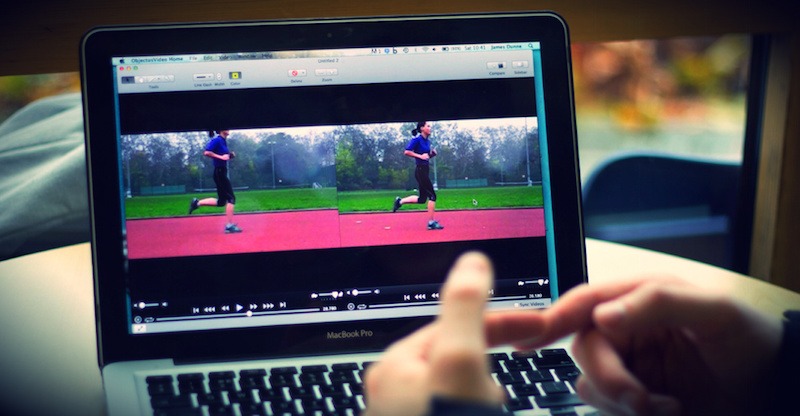
I want to briefly introduce a simple concept I refer to as: Minimum Effective Change .
Recently I’ve been involved in a number of exchanges on Twitter with coaches, physios and others discussing Running Gait Re-Education, a topic I’m particularly passionate about. The conversations usually start in the context of injury rehab, and often turn to discuss running efficiency. I thought I’d take to the blog to share my thoughts…
Path of Least Resistance
The way I see it, each and every one of us runs with our own particular style for good reason.
Your running gait (walking gait and any other movement pattern for that matter) is a dynamic expression of your combined:
- Strengths
- Weaknesses
- Areas of Restriction
- Areas of Mobility
- Stability & Instabilty
- Neuromuscular Control / Co-ordination / Timing (or lack thereof)
- that’s just for starters…
Not to mention the habits we pick up along the way through pain (current or previous) and daily postures we hold ourselves in.
Taking all the above factors into account: as we run, your body will try to follow the path of least resistance. For example in terms of mobility, finding movement from the areas most willing, or strength-endurance, often emphasising imbalances…
Biomechanical Efficiency & Performance
As coaches, therapists and athletes let’s not get too hung-up on subtle changes in efficiency (real or perceived) that come with changing an athlete’s running gait…
The sparse research I’m aware of that investigates the effects of ‘x’ vs ‘y’ technique, footstrike pattern, footwear etc… in terms of running efficiency, suggests that changes in efficiency for given conditions are fairly minimal. Some examples here and here.
There are plenty of fast and theoretically ‘inefficient’ distance runners. Biomechanical efficiency doesn’t make a given runner faster… CONSISTENT TRAINING DOES
Thus we should be more concerned about what we can do to affect a positive change to the factor that normally most limits an athlete’s training consistency: INJURY & PAIN
Minimum Effective Change
Firstly, consider these points in combination:
- Most of the running injuries we see fall into the overuse category, meaning that tissue stress plus training load has overloaded a certain tissue.
- We know that with altering running gait, the kinetic and kinematic changes result in forces being redistributed around the body. Taking load away from one area, adding to another. The classic example being the differing external and internal joint moments acting upon the knee and ankle in early stance phase when heel striking vs forefoot running.
- Appreciating that while we can modify the load on injured tissues through changes in gait: when we’re coaching these changes to running form, the further we move away from the athlete’s habitual loading pattern, the more of a ‘shock to the system’ this is going to be for other tissues in the body.
- Given that the athlete’s previous gait pattern demonstrated their body’s path of least resistance, the further away from this we deviate, the harder it’s potentially going to be for them to sustain the desired changes… at least in the short to medium term while they should also be working on improving the physical traits that dictated their path of least resistance in the first place!
We have to ask ourselves not just why we’re coaching each athlete to make any given change, but perhaps most importantly to what extent we need the given change to occur to see a change in their symptoms…
If we take a given athlete, understand their current and historical injury status and individual biomechanics, then work towards the concept of Minimum Effective Change to elicit a desired outcome, we can reduce stress / strain on a given tissue while achieving a modified running style that they can sustain effectively.
Take a Patellofemoral Pain suffering marathon runner for example:
Once we manage to get them pain free, I’m not overly interested in how ‘pretty’ their gait can look for for 400m on the track*, or a ten minute trial on the treadmill in the lab. Instead I want to see how well they maintain form sufficiently across 26.2 miles on race day, or an 18 miles long Sunday run to be able to run pain free!
*That said, if interval sessions were the aggravating factor for their pain, then of course I want to work on form in this state as another primary focus.
In fact in such an example as this marathon runner above, if sacrificing a little bit of running efficiency is required to run pain free and achieve their goal, then so be it. They will be able to train, and fitness will come… More on this here.
For me, the sweet spot is the change we can make to an athlete’s gait which does enough to reduce stress and strain on their ‘weak link’, yet is subtle enough to sustain on a long run… after a bit of practice, of course ![]()
The post Running Form: ‘Minimum Effective Change’ appeared first on Run Coaching, Ironman and Triathlon Specialists - Kinetic Revolution.
from Run Coaching, Ironman and Triathlon Specialists - Kinetic Revolution http://feedproxy.google.com/~r/KineticRev/~3/Pu3oCeGI-To/

No comments:
Post a Comment